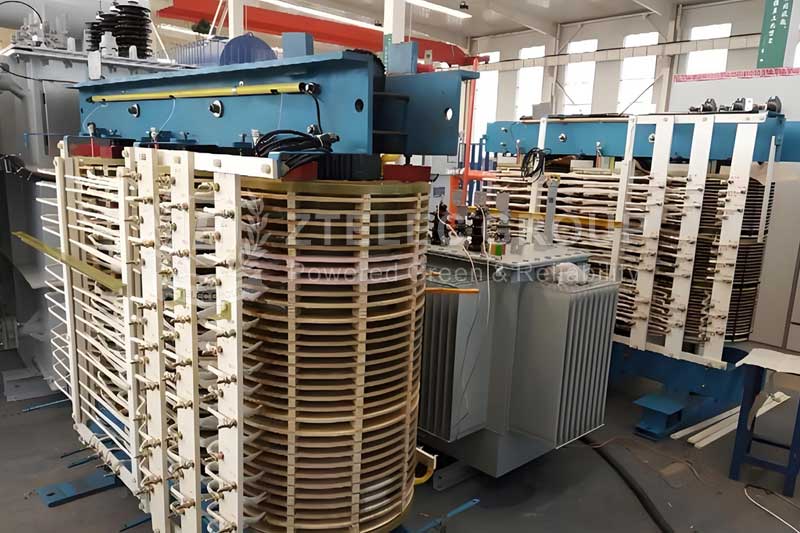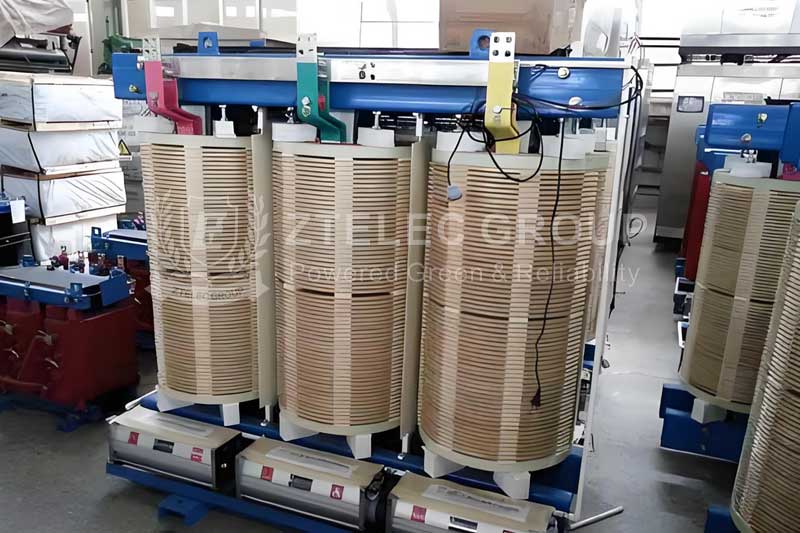What is a Phase Shifting Transformer? Applications of Phase Shifting Transformers
Time:2024-10-10 Auther:ZTelec-www.ztelectransformer.com
A phase shifting transformer (PST) is a specialized transformer that plays a unique role in power transmission and voltage regulation. Unlike traditional transformers, a phase shifting transformer not only alters the voltage but also changes the phase relationship between voltage and current, enabling control over power flow in electrical systems. Through this device, voltage regulation, power control, and line protection can be achieved, providing crucial support for the stable operation of modern power systems.
Working Principle of Phase Shifting Transformers
The primary function of a phase shifting transformer is to adjust the phase angle between the input and output voltages, which directly affects how power flows within the electrical grid. This is accomplished through specific winding structures or adjustments in the magnetic core that allow for phase shifting between the primary and secondary windings. By altering the phase, the flow of both active and reactive power can be controlled, which is essential for dynamic management of power distribution.
Advantages of Phase Shifting Transformers
- Stemless Voltage Regulation: Phase shifting transformers can precisely adjust the output voltage to meet varying load conditions, making them an ideal solution in situations where frequent voltage adjustments are necessary.
- Improved Power Flow Control: By altering the phase of the output, these transformers allow for better control of power flow across transmission lines, optimizing the distribution of electrical energy across the grid and improving operational efficiency.
- High Efficiency and Stability: Phase shifting transformers are designed with high-quality materials, such as low-loss magnetic cores and conductive windings, minimizing energy losses and improving power transmission efficiency. They also exhibit long-term stability, performing reliably in demanding environments.
- Versatility: Beyond voltage regulation, phase shifting transformers are versatile and can be utilized in power distribution, load balancing, and even grid protection, making them multifunctional devices in electrical systems.

Applications of Phase Shifting Transformers
Phase shifting transformers are extensively employed in power systems that require precise control over power flow. Here are some common applications:
- Substations: In substations, phase shifting transformers are utilized to adjust the phase angle between input and output voltages, regulating power flow and preventing overloads while enhancing grid security.
- Interconnected Grids: When linking different power grids, phase shifting transformers ensure balanced power exchange between regions. They are particularly effective in preventing reverse power flows and adjusting interconnection flows as necessary.
- Industrial Power Supply: Large industrial facilities often have complex electrical demands. Phase shifting transformers assist in distributing power efficiently across various production lines, improving system performance and reducing operational costs.
- Urban Distribution Networks: In urban power grids, these transformers enhance voltage quality and minimize transmission losses, ensuring a stable electricity supply. They also help balance the load across distribution lines, preventing local overloads.
- Renewable Energy Integration: As wind and solar energy sources are increasingly incorporated into power grids, the fluctuating nature of renewable energy can lead to instability. Phase shifting transformers can balance the flow between generation and consumption, ensuring smoother grid operation.
- Grid Protection: Phase shifting transformers are also employed to protect power lines by monitoring changes in voltage and phase. They can swiftly detect faults or abnormal conditions and automatically take protective actions to safeguard equipment and infrastructure.
As power demand continues to rise and grid structures become increasingly complex, the role of phase-shifting transformers in power systems will become even more crucial. Looking ahead, advancements in technology are expected to lead to the development of smarter, more modular, and efficient phase-shifting transformers. For instance, integrating sensors and control systems could facilitate real-time, automated adjustments to dynamic changes in power grids. Furthermore, advancements in power electronics will enhance transformer efficiency, reduce size, and lower costs.
Phase-shifting transformers are versatile devices utilized in a wide array of power system applications. By adjusting both voltage and phase, they enable precise control over power flow and contribute to improved grid stability, efficiency, and safety. As power grids continue to evolve and renewable energy sources expand, phase-shifting transformers will remain essential to the future of reliable and efficient electricity distribution.





